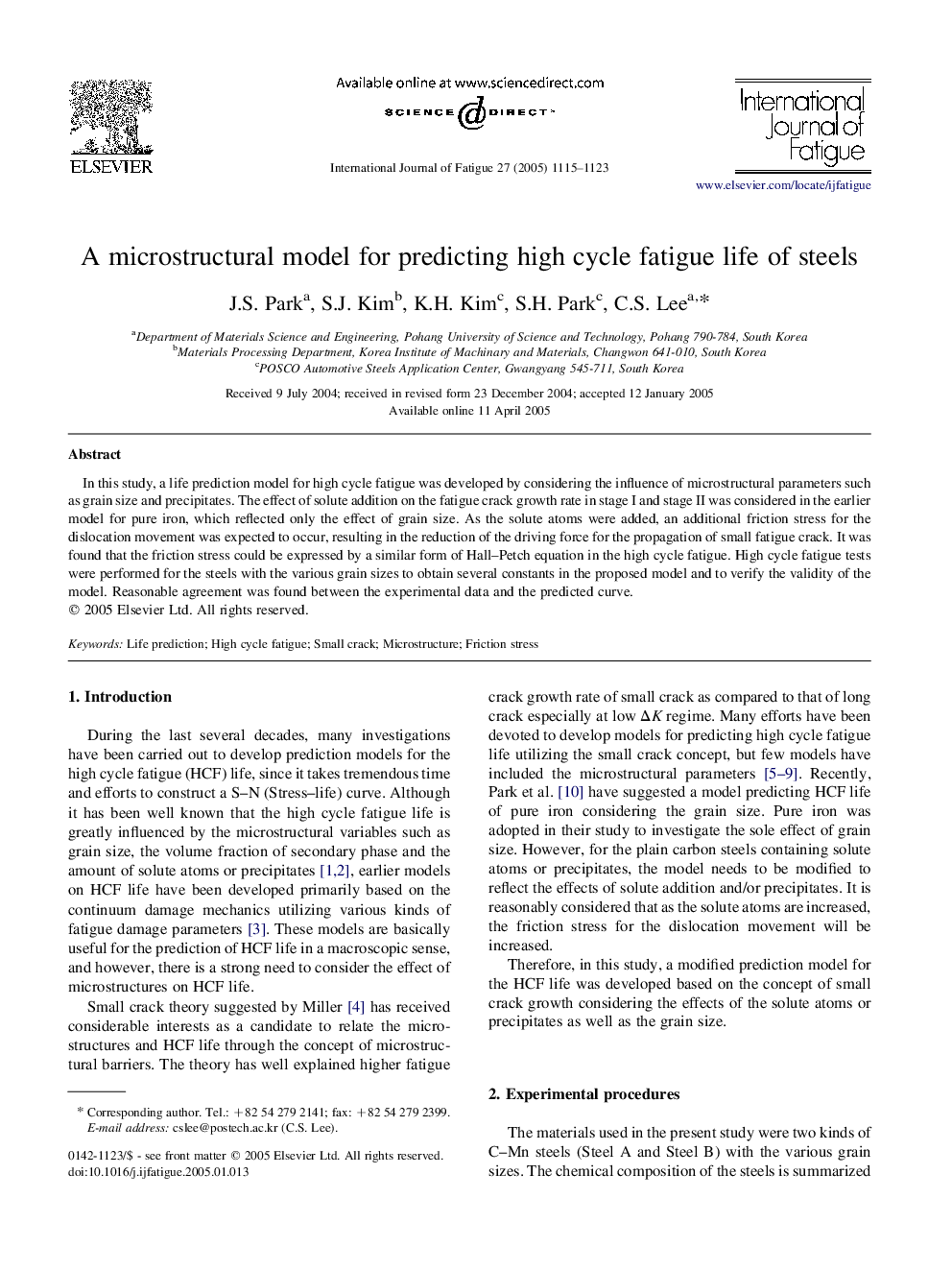| Article ID | Journal | Published Year | Pages | File Type |
|---|---|---|---|---|
| 9703920 | International Journal of Fatigue | 2005 | 9 Pages |
Abstract
In this study, a life prediction model for high cycle fatigue was developed by considering the influence of microstructural parameters such as grain size and precipitates. The effect of solute addition on the fatigue crack growth rate in stage I and stage II was considered in the earlier model for pure iron, which reflected only the effect of grain size. As the solute atoms were added, an additional friction stress for the dislocation movement was expected to occur, resulting in the reduction of the driving force for the propagation of small fatigue crack. It was found that the friction stress could be expressed by a similar form of Hall-Petch equation in the high cycle fatigue. High cycle fatigue tests were performed for the steels with the various grain sizes to obtain several constants in the proposed model and to verify the validity of the model. Reasonable agreement was found between the experimental data and the predicted curve.
Related Topics
Physical Sciences and Engineering
Engineering
Mechanical Engineering
Authors
J.S. Park, S.J. Kim, K.H. Kim, S.H. Park, C.S. Lee,
